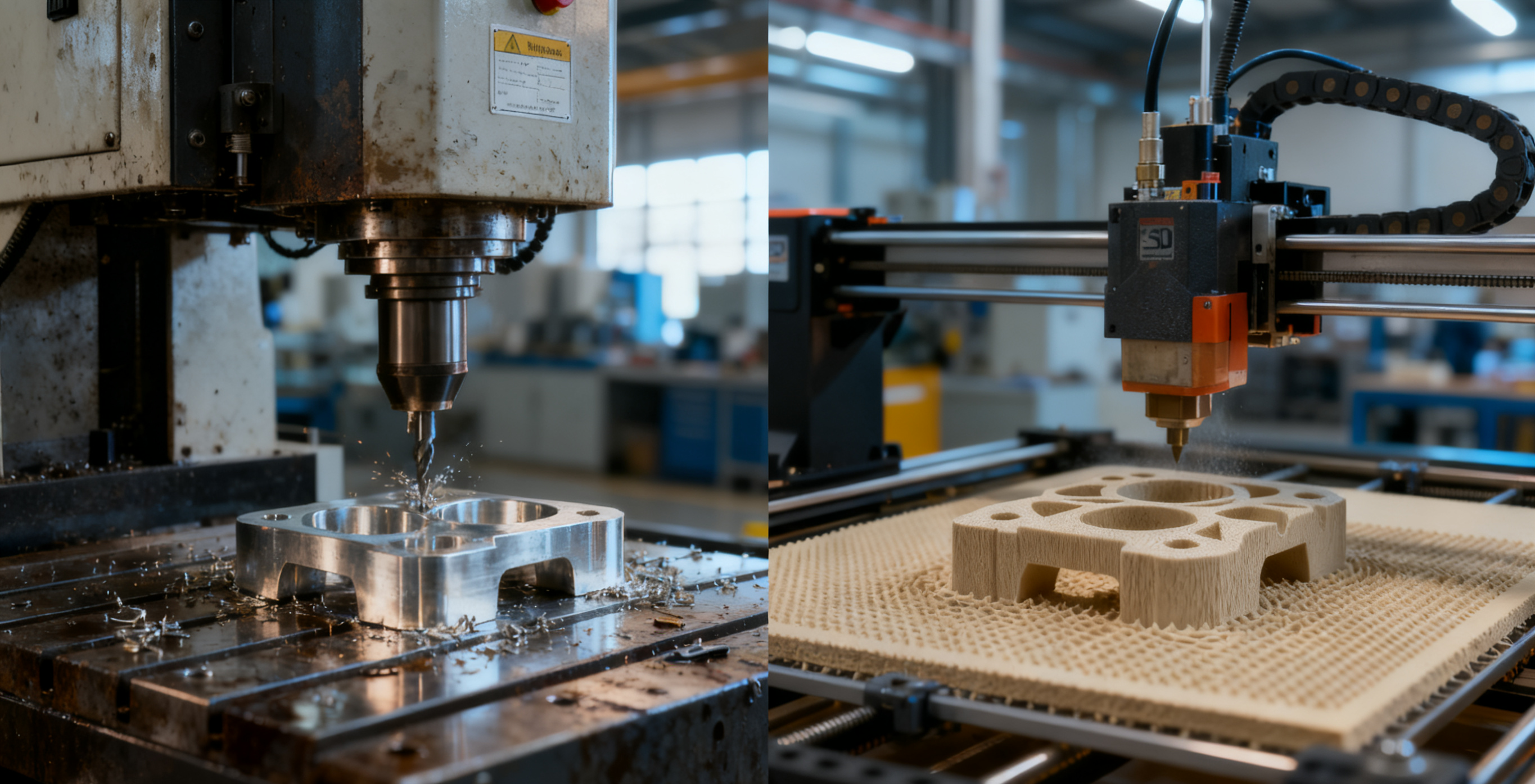
At the crossroads of modern manufacturing,a silent technological competition is played out daily on the shop floor.On one side is the traditional powerhouse—CNC machining,battle-tested and proven.On the other side is the emerging force—3D printing,rapidly gaining ground.But which technology is better suited for your project?Let’s set aside theoretical debates for now and look for answers through three real-world scenarios.
Case 1:Aero Engine Blade Repair
When an airline needed to repair the blades of a Boeing 737 engine,the team faced a critical decision.These titanium alloy components not only had to withstand extreme temperatures but also had stringent requirements for surface quality and dimensional accuracy.Initially,engineers attempted to use metal 3D printing for the repair,but during fatigue testing,they found that the interlayer bonding strength was insufficient.
Switching to a five-axis CNC machining center made a world of difference.With precision CNC milling,the process not only perfectly recreated the complex aerodynamic shape of the blade but also achieved a surface roughness of Ra0.4 micrometers.More importantly,the components that underwent precision machining demonstrated excellent fatigue resistance in bench tests,fully meeting aerospace standards.This case illustrates that in fields with extremely high demands for material integrity and mechanical properties,traditional CNC machining still holds an irreplaceable position.
Case 2:Medical Device Low-Volume Production
A startup in Silicon Valley,MedTech,developed an innovative surgical instrument and needed to produce 200 sets for clinical validation.The device included over 30 metal parts,ranging from a mirror-finish outer shell to intricate internal transmission mechanisms.
Initially,the team considered using CNC machining for all parts,but cost analysis showed that just the mold-making expenses would consume 40%of the entire R&D budget.Cleverly,they opted for a hybrid solution:they continued to use CNC turning for the stainless steel transmission components that were subject to high stress,while switching to metal 3D printing for the complex-shaped but low-stress outer shell.This strategy not only ensured the reliability of key components but also reduced total costs by 65%and shortened the production cycle from 8 weeks to just 3 weeks.
Case 3:Automotive R&D Prototype Development
An automotive manufacturer in Munich,Germany,needed a functional prototype of a transmission bracket within 48 hours while developing a new car model.If they had followed the conventional CNC machining process,just programming and setup would have taken half a day.At this point,selective laser sintering 3D printing technology demonstrated its unique advantages—the design team completed model modifications in the afternoon and had a physical part ready for assembly testing the next morning.
However,in the subsequent manufacturing of tooling fixtures,the situation reversed.When it came to producing 500 sets of aluminum alloy positioning tools for the assembly line,CNC milling was clearly more cost-effective and efficient than additive manufacturing.Especially considering that these fixtures needed to be reused and must maintain long-term dimensional stability,the economy of traditional manufacturing methods became evident.
Through these cases,we can see that modern factories are entering a new era of collaborative manufacturing.Smart engineering teams no longer stick to a single technology but,like skilled conductors,flexibly allocate different manufacturing resources based on product requirements.In the wave of digital transformation of the global manufacturing industry,what truly matters is not which technology reigns supreme,but how to combine them organically—as a senior manufacturing director once said:“The best manufacturers are not factories with the most expensive equipment,but experts who know how to choose the right manufacturing process for each part.”
When you face manufacturing decisions in your next project,ask yourself a few key questions:What are the functional priorities of the part?What is the batch size?What are the quality standards and cost framework?The answers will naturally guide you to the most suitable manufacturing path.In this era of rapidly evolving technology,flexibility and judgment are always more valuable than blindly following new technologies.
A startup I worked with need
READ FULL